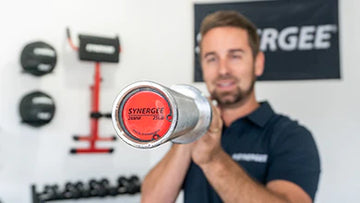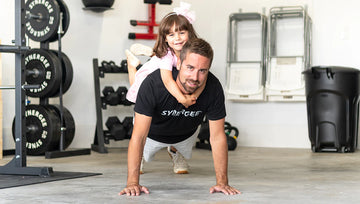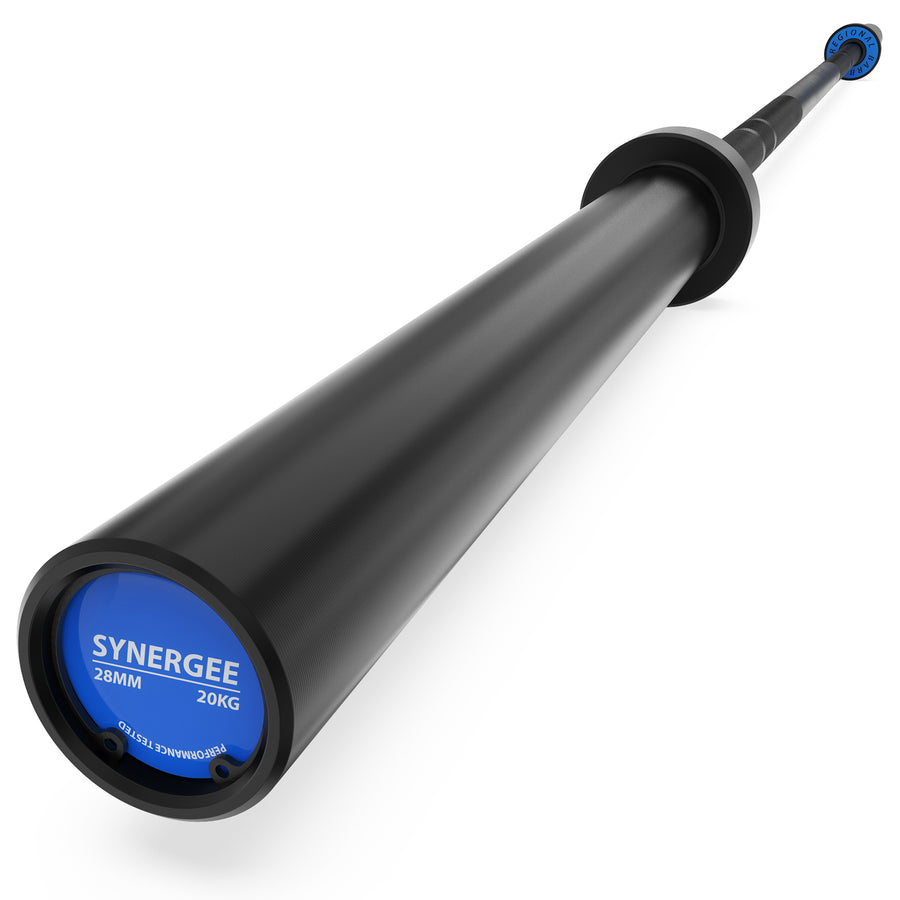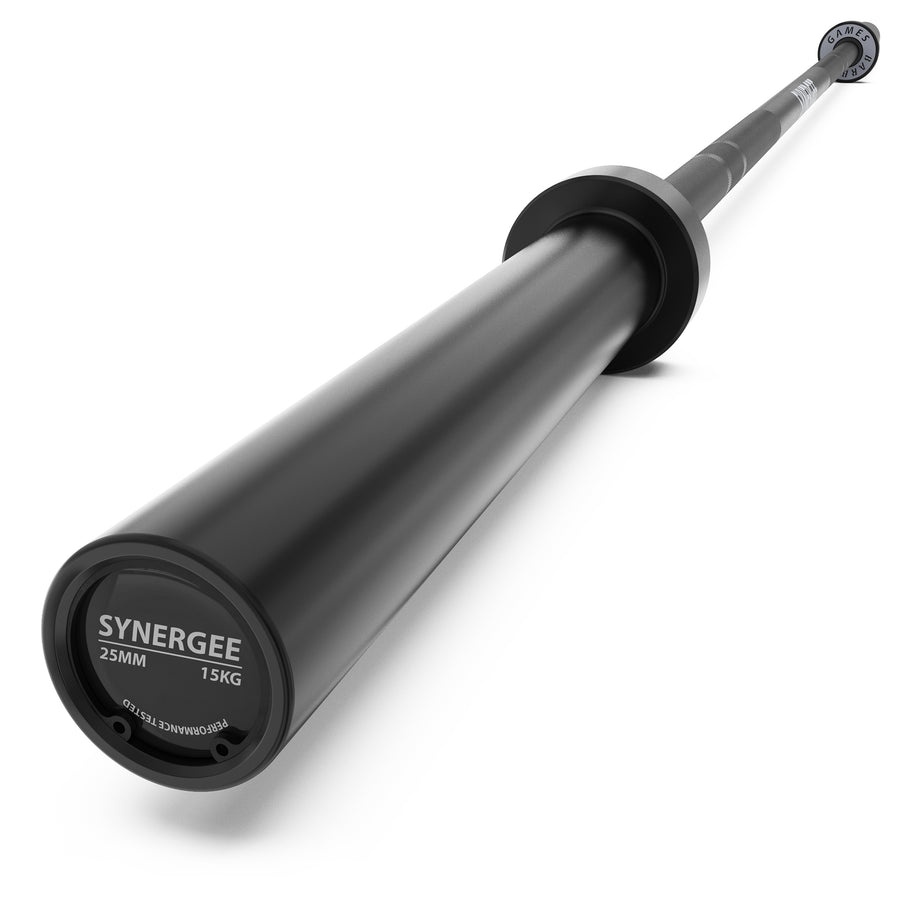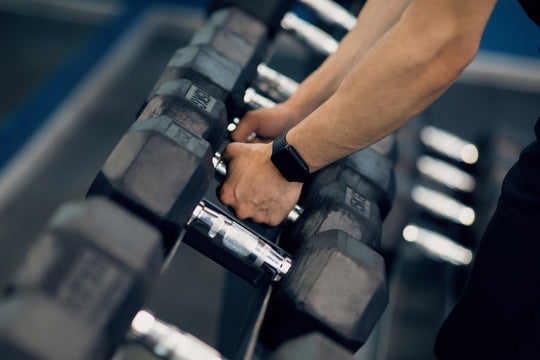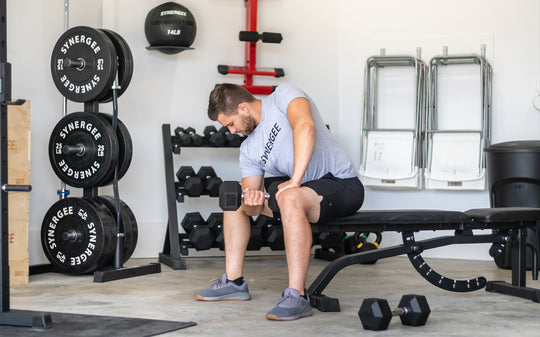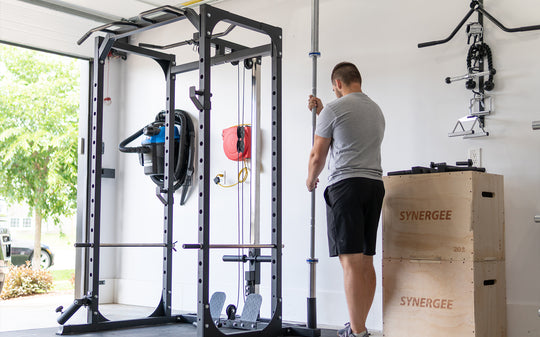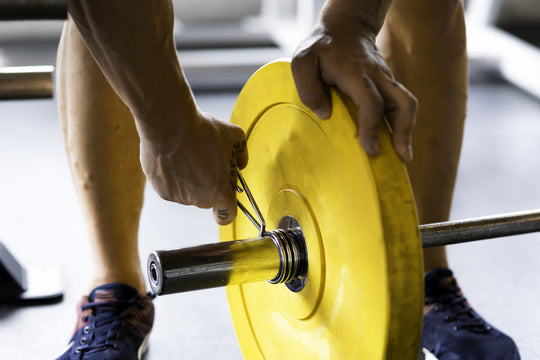Lift Smart: The Best Olympic Lifting Warm-Up!
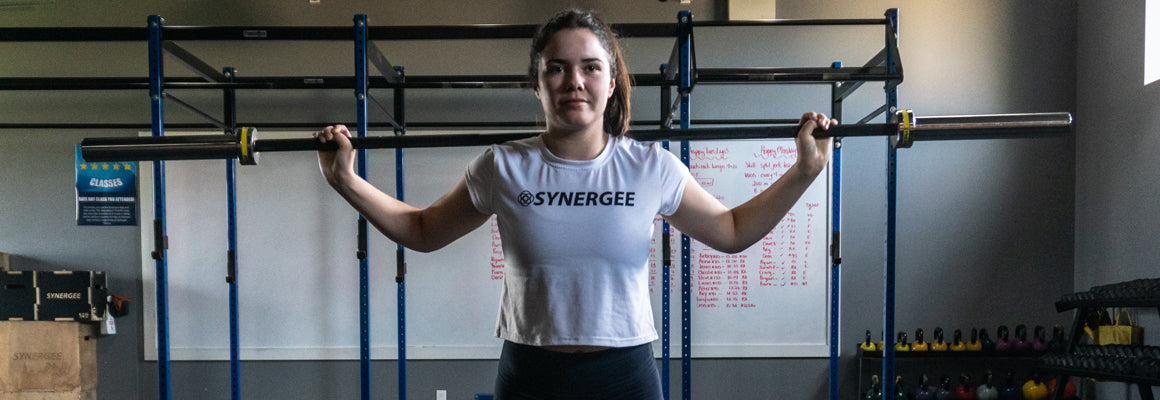
Have you ever walk into the gym & started swinging your Synergee Games Bar around without a proper warm up? Did you feel like the Tin Man; stiff and stuck? Did you wish there was a real-life Oil Can you could use on your joints to open ‘em up and unstuck yourself?!
Well, there is a real life equivalent; but it doesn’t come in the form of an elixir!
The magic formula for freeing your Inner Athlete from the Cage of Stiffness is: THE BURGENER WARM UP!
WARMING UP: IT’S WHAT ALL THE COOL – I MEAN WARM – KIDS ARE DOING
Warming up is an essential part of working out and choosing the right warm up allows you to have the most effective – and safest – workout possible.Warming up properly helps you avoid injury, use proper form, and prepares your body for the hard work ahead by increasing your blood flow to your muscles and conditioning the body to move efficiently and with more range of motion.
Now you know warming up is important – but what makes a “good warm-up”?
If you’re into Olympic Lifting, let me introduce you to your new best friend: The Burgener.

THE BURGENER
The Burgener Warm-Up consists of the exercises that make up the Snatch; but it can also be adapted to warm up for Clean & Jerks.
It breaks down these complex lifts to let you to focus on your body’s movement around the bar you will execute as you propel it from ground to overhead. The Burgener is also great tool for teaching people how to Snatch and Clean, because it breaks it down into all the small movements.
Most of all, though, it is a very effective warm-up for seasoned lifters. It reinforces the movements your body needs to perform to lift explosively and dynamically.
The Burgener Warm-Up breaks down the very complex ground-to-overhead fluid movement into 6 parts:
- Down and Up
- Elbows High and Outside
- Muscle Snatch
- Snatch Land
- Snatch Drop
- Hang Power Snatch
To do this warm-up, complete 3-5 repetitions with a PVC pipe, a broom stick, a mop – whatever long, light, bar-like thing you can get your hands on! Start off light: this is not the time to show off how strong you are. Rather the objective is to move through the movements as efficiently and intentionally as possible.
After 1 run through with a PVC, you can perform another set with the Regional Bar.
[Note, I used Mike Burgener’s “The Burgener Warm-Up” article as a resource]
Down & Up
What is it?
The Down & Up – AKA the “dip-drive” or “the second pull” – is the part of the lift where all the power is generated from.
What does it do?
This exercise targets explosive extension of your ankles, knees, and hips exerts a force on the bar that forces it up, so you can then get yourself under the bar to receive it.
How do I do it?
Start in the high hang position
Keep your chest up, stick your butt out JUUUUST slightly (i.e. no muted hip) and keep the bar close (i.e. touching your hips)
Dip down to quarter squat depth, keeping your chest up & bar close!
IMMEDIATELY extend your ankles, knees, and hips all the way into a shoulder shrug. Do not wait at the bottom at all.

Elbows High & Outside
What is it?
This move helps keep the bar close to the body by moving the arms high and outside as you move through the third pull.
What does it do?
Helps you train for a more efficient pull when you are transitioning from pulling the bar to getting under the bar.
How do I do it?
Complete the “Down & Up” movement. As you shrug your shoulders, continue moving the bar upwards by pulling the elbows high and outside. If you look like a scarecrow, you are doing it right!

Muscle Snatch
What is it?
This goes through the movement of moving the bar from in front of the body to overhead. This isolates the third pull and receival of the barbell in the catch position. The Muscle Snatch means the knees DO NOT re-bend to get the bar overhead.
What does it do?
This movement is an upper-body strengthening exercise. It develops your ability to aggressively pull yourself under the bar so you can catch the bar overhead with your arms fully locked out.
How do I do it?
Complete the previous movements – Down & Up, right into Elbows High and Outside – and aggressively pull the bar overhead, catching it with locked out arms. Do not re-bend your knees.

Snatch Land
What is it?
Snatch lands moves you through the proper way to catch the bar overhead.
What does it do?
This movement strengthens the receiving position of your snatch and will familiarize you with catching the bar in a power position.
How do I do it?
Following the muscle snatch, keep the barbell overhead.
Perform a small dip-drive with your hips and knees. As you exert force upwards on the bar, simultaneously pull your body down to a quarter-squat position under it.

Snatch Drop
What is it?
The Snatch Drop is like the Snatch Land, but without the dip-drive and it finishes in a full squat.
What does it do?
This movement trains your speed, explosiveness, and tension; and also focuses on your foot positioning during the catch.
How do I do it?
Have the bar overhead, arms locked out and actively pushing up on the bar. Keep your core braced, then drop into the full squat.
Do not heave on the bar. Just drop as aggressively as you can. Maintain muscle tension throughout this movement. Don’t just “descend” under the bar. Drop aggressively!
Your feet will transition from the jumping position to the landing position (slightly wider)

Hang Power Snatch
What is it?
Pulling all these moves together to execute a power snatch!
What does it do?
Trains you to use all the movements to jump the barbell up and land with it overhead.
How do I do it?
Start in the high hang.
Dip down slightly, then fully extend your ankles, knees, and hips. Shrug your shoulders, and allow this momentum to send the bar upwards.
As the bar is being propelled upwards, pull yourself under the bar aggressively to catch it in a quarter squat with your arms fully extended. Your feet will move from the jumping position to the landing position as this transition happens.



